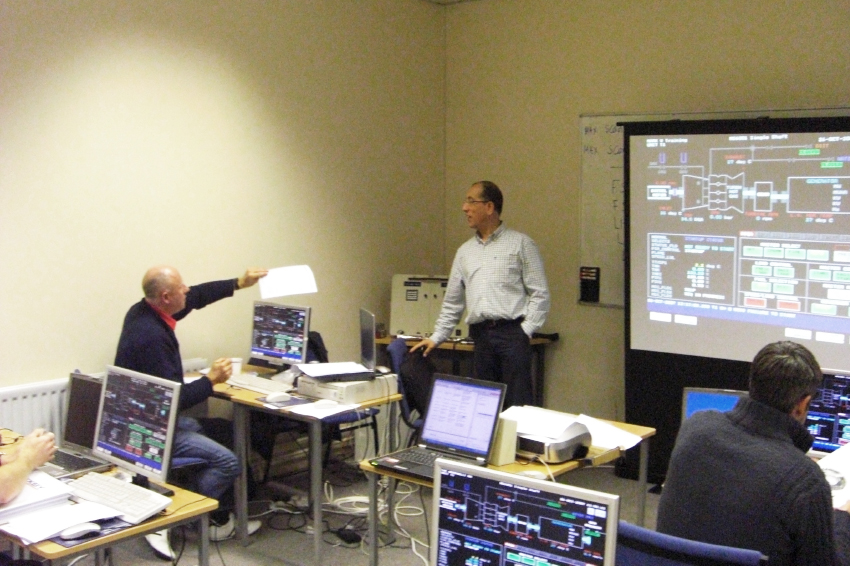Training Services
MARK VI Operation and Maintenance
Course Duration: 5.0 Days
Course Outline:
Day 1
- Introduction Speedtronic Mark VI
- GE Gas Turbine Fundamentals and control basics.
- System overview and Architecture
- Panel, modular concept discussion
- Mark VI cards
- Internal and external Mark VI wiring
- Hardware documentation
- The main protection system VPRO
- Supply voltage.
Day 2
- Data structure of the operator interface
- Brief discussion of the Windows 2000/XP based operator interface
- Most important files of the operator interface and their function
- Failure of the operator interface, what to do.
- Communications with the operator interface, Ethernet and DCS communications
- Operator interface facilities, TOOLBOX and Cimplicity
- Watch Windows
- The M6B file, functions, modules and tasks
- The Finder
- Trip log
- Alarm display
- Trouble shooting procedure
- Control constants
- Mark VI tools (TOOLBOX practice)
- Trend Recorder, Historical trip display, Alarms and SOE’s
Day 3
- Mark VI software structure
- M6B file, MKVI I/O and functions Programming languages of the Mark VI Macro’s and Modules
- Practice: Making Mark VI software with TOOLBOX
- Digital input.
- Analog input with software by students
- Digital input with software example by Students
- Gas turbine sequence
- Control modes
- Start up and permissive for start
- IGV sequence
- Normal stop
- Emergency stop
- Discussion of the following controls and sequencing
- Fuel control
- Start up, Speed, Acceleration, Temperature, Shut-down control and Manual FSR control Special control loops Inlet Guide Vane, Anti icing,
Water / steam injection and Start and stop. - Control loops The protection systems Flame detection, Overspeed, Vibration,
Exhaust temperature, Lube oil pressure and temperature, Fire protection system.
- Discussion of the following controls and sequencing
- Synchronization, auto and manual Power factor control MVAR control
- Dry Low NOx
- Explanation of the system
- Discussion of the controls, implementation in Mark VI
- controls and logics
Day 4
- Trouble shooting, alarm analysis and limited software changes in practice
- Diagnostics of card failure-Card replacement procedure.
- Alarm display-Setup and configuration
- Alarm Management (flow chart explanation)
- Exercise of different simulated alarms trouble shooting
- Changing control constants, adding alarms
- Trip Log display and interpretation.
Day 5
- Trouble shooting using simulation
- Configuring Trip log display
- Adding Sequencing (CI, CO etc.), Build, Downloading, HMI device
- Configuring a new Cimplicity screen.
- Case study: Unit “not ready to start”. Start Checks, Trip logs. First failure analyses for trips (emergency stop)
- Class Discussion and Evaluation of the course
Course Registration
Our Goal
Our goal is to provide our customers with the most up-to-date training available. Proper maintenance and training have been proven to be two factors which can guarantee a higher return. We at CTS can assist you in both areas. We provide our customers with on-site training which can be scheduled at your convenience. In addition, we are able to provide assistance with your maintenance/training plan to insure you get the kind of training you need.



Previous
Next